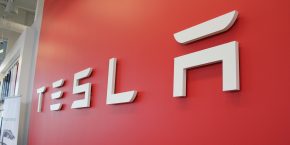
Tesla’s 8.1 software update released this week is the most significant step for the Autopilot program on the new hardware. Chris Lattner, Tesla’s Vice President of Autopilot software, said so himself:
8.1 is the biggest update yet for Autopilot HW2 cars: https://t.co/xwCWdpWJnv
— Chris Lattner (@clattner_llvm) March 29, 2017
Indeed, it’s the biggest jump for the speed limit, but Electrek has also learned that Tesla is now making a better use of its hardware. With the 8.1 update, Tesla is now using 2 cameras instead of just the one out of the 8 cameras on the sensor suite.
As we previously reported, Tesla is currently rebuilding its Autopilot features on the new hardware suite introduced in October 2016.
They are transitioning from using technology proprietary to Mobileye on a single camera setup and radar to a new suite with 8 cameras, 3 front-facing and 5 around the car, a radar, 360-degree ultrasonic, and Tesla’s own image processing technology running on a Nvidia supercomputer.
Until this week, Tesla was only trying to recreate the capabilities on ‘Tesla Vision’ using equivalent hardware, a front-facing camera, radar, and also GPS data, but we were able to confirm that for the update 8.1, Tesla added another front-facing camera in order to improve Autosteer performance – especially at high-speed.
The update increased the speed of Autosteer from 55 mph to 80 mph to make it more useful on highways. Early tests show that the performance is now comparable to the first generation Autopilot:
From here, Tesla’s fleet learning capability should enable a rapid increase in performance for Autosteer and the Enhanced Autopilot’s other features.
The new vehicles have still not really reached feature parity with the first generation Autopilot cars since things like automatic wiper and headlight are still not enabled.
Tesla is still very much focused on improving the safety features using the new Autopilot suite first. We are told that the high priority right now is to enable Automatic Emergency Braking (AEB). The feature is credited for being in part responsible for reducing the crash rate of Tesla’s first generation Autopilot cars by almost 40%.
For the first generation, Tesla built its AEB system on top of Mobileye’s, but the one on the new hardware will be powered entirely by Tesla and the company needs to make sure to get the false positive rate as low as possible in order to implement the feature safely.
Once the safety feature will be released, Tesla will be able to focus on other Enhanced Autopilot features, like Autosteer+ and Smart Summon, and eventually leading to fully self-driving capability, according to Tesla.
FTC: We use income earning auto affiliate links. More.




Comments